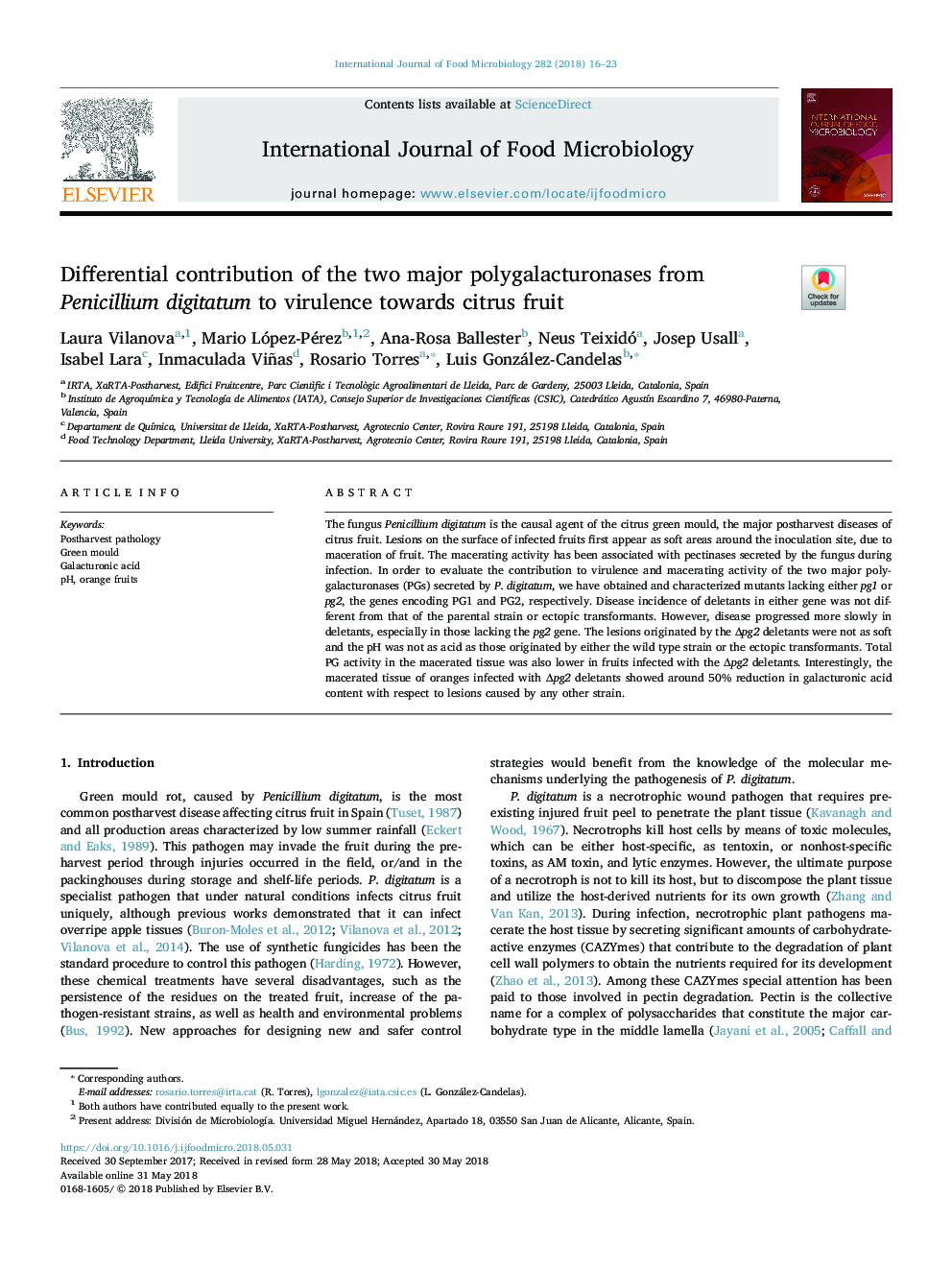| Article ID | Journal | Published Year | Pages | File Type |
|---|---|---|---|---|
| 8844113 | International Journal of Food Microbiology | 2018 | 8 Pages |
Abstract
The fungus Penicillium digitatum is the causal agent of the citrus green mould, the major postharvest diseases of citrus fruit. Lesions on the surface of infected fruits first appear as soft areas around the inoculation site, due to maceration of fruit. The macerating activity has been associated with pectinases secreted by the fungus during infection. In order to evaluate the contribution to virulence and macerating activity of the two major polygalacturonases (PGs) secreted by P. digitatum, we have obtained and characterized mutants lacking either pg1 or pg2, the genes encoding PG1 and PG2, respectively. Disease incidence of deletants in either gene was not different from that of the parental strain or ectopic transformants. However, disease progressed more slowly in deletants, especially in those lacking the pg2 gene. The lesions originated by the Îpg2 deletants were not as soft and the pH was not as acid as those originated by either the wild type strain or the ectopic transformants. Total PG activity in the macerated tissue was also lower in fruits infected with the Îpg2 deletants. Interestingly, the macerated tissue of oranges infected with Îpg2 deletants showed around 50% reduction in galacturonic acid content with respect to lesions caused by any other strain.
Related Topics
Life Sciences
Agricultural and Biological Sciences
Food Science
Authors
Laura Vilanova, Mario López-Pérez, Ana-Rosa Ballester, Neus Teixidó, Josep Usall, Isabel Lara, Inmaculada Viñas, Rosario Torres, Luis González-Candelas,
